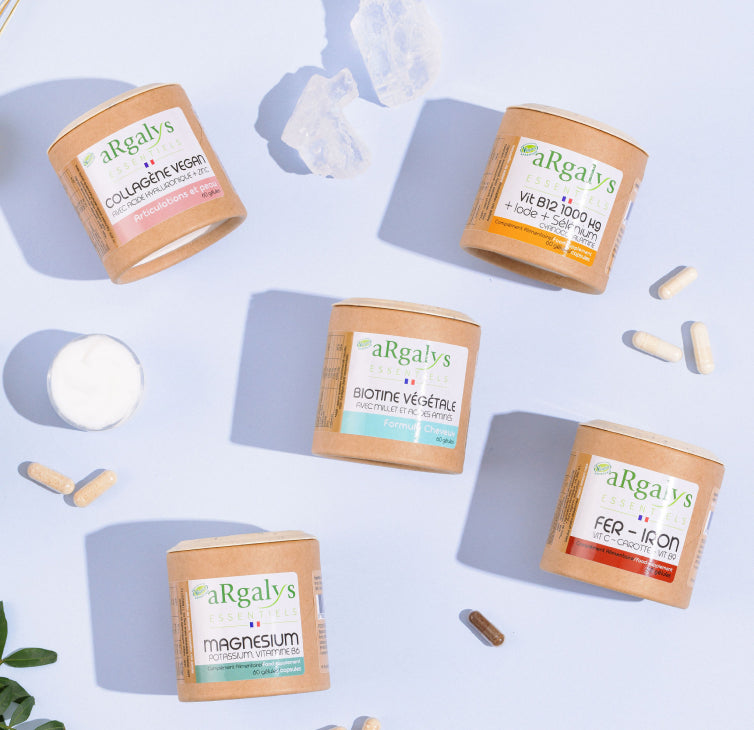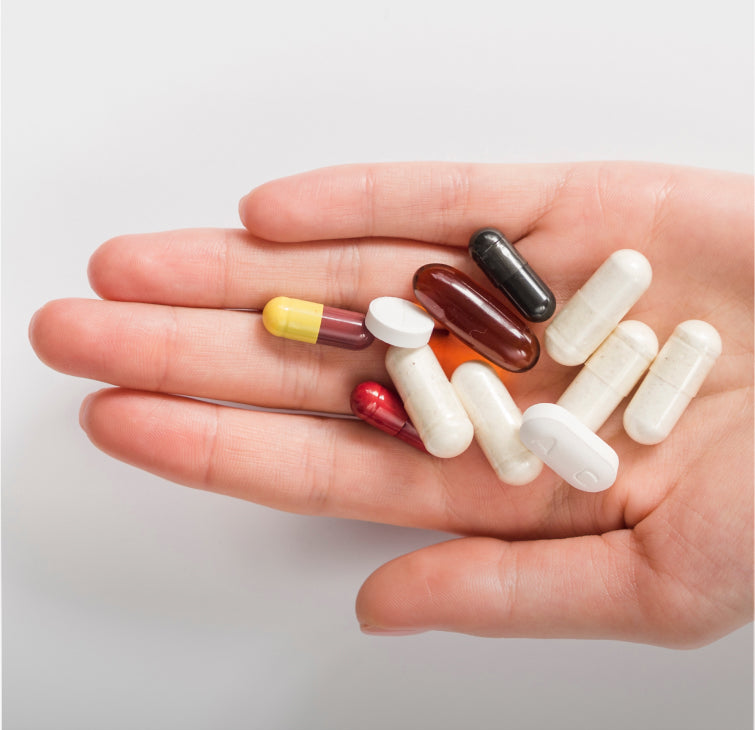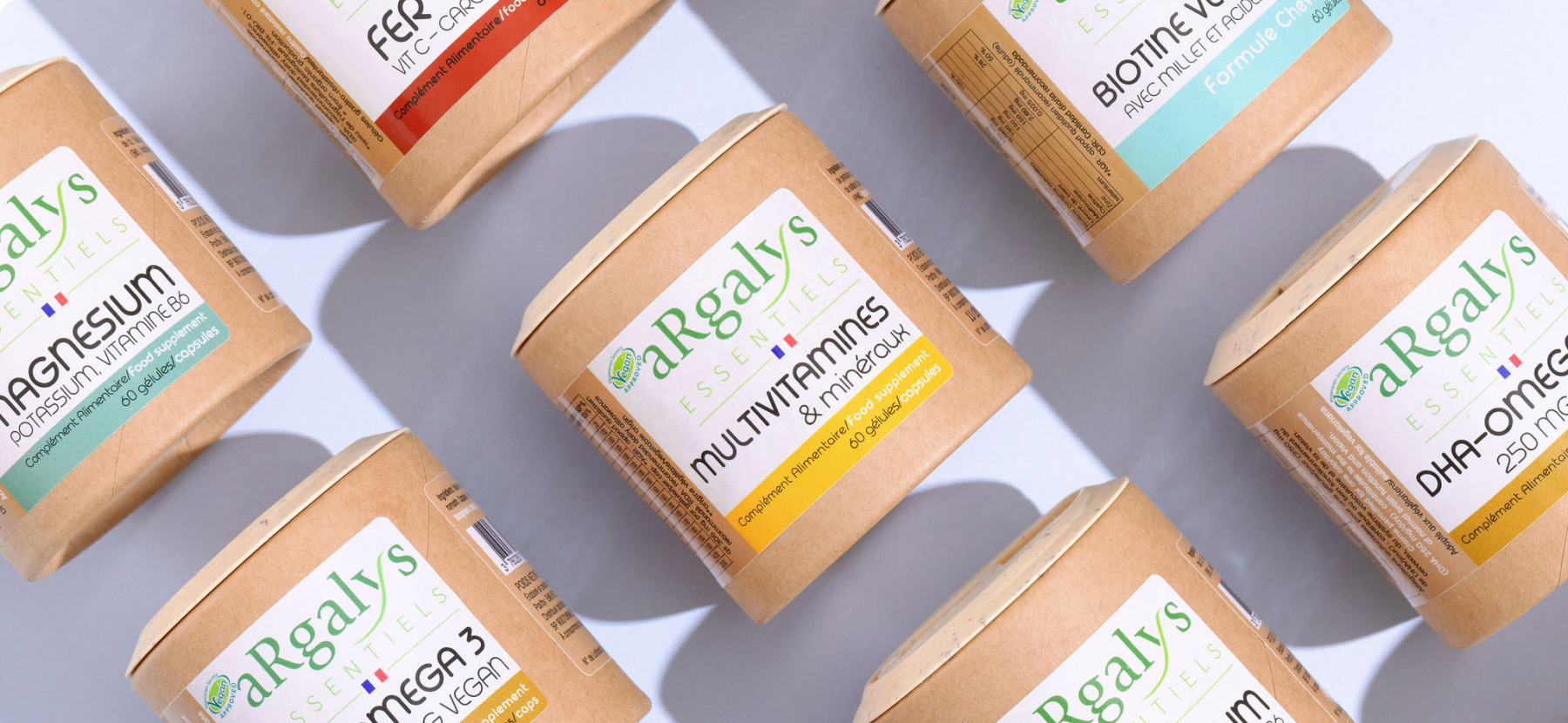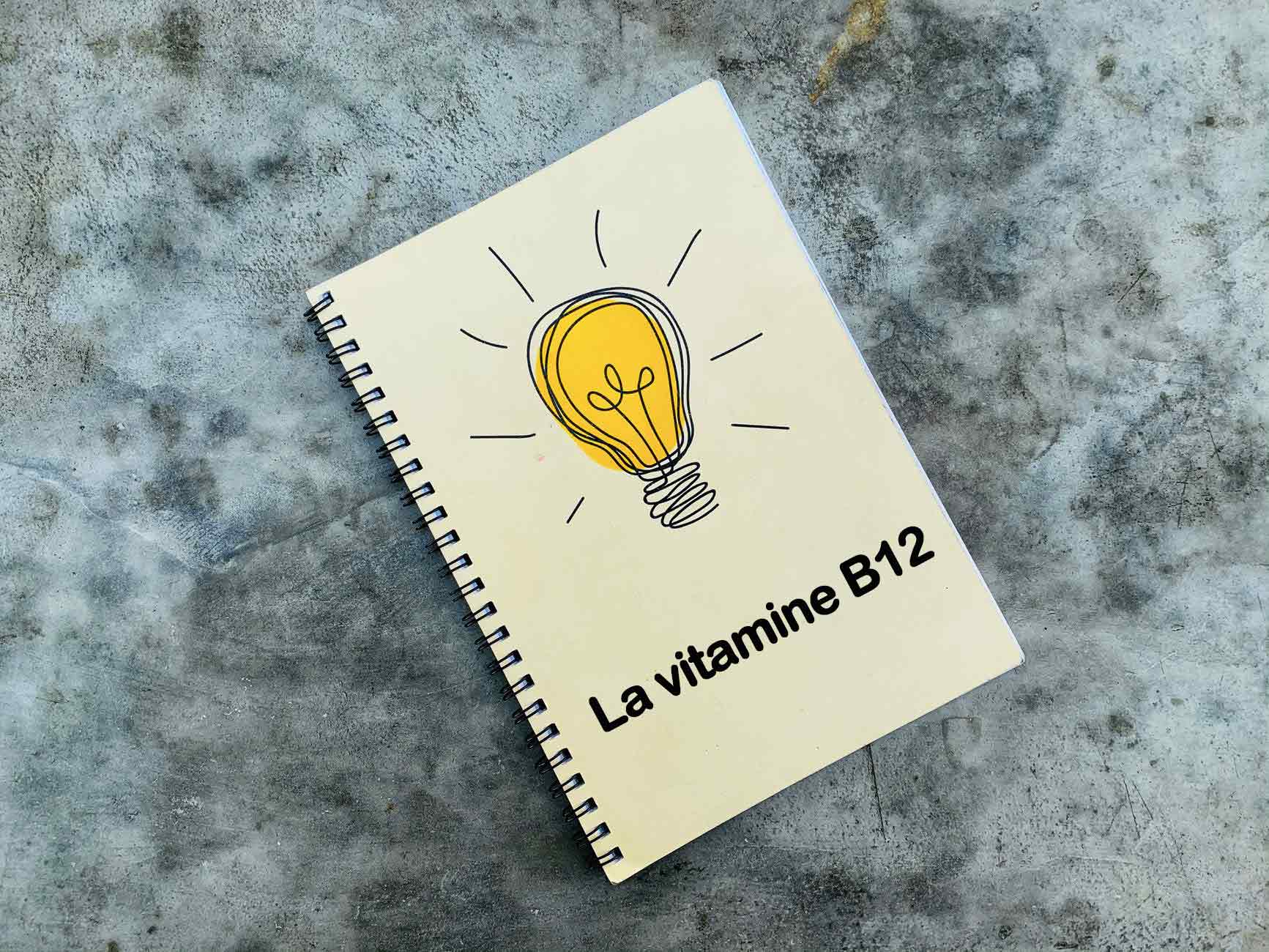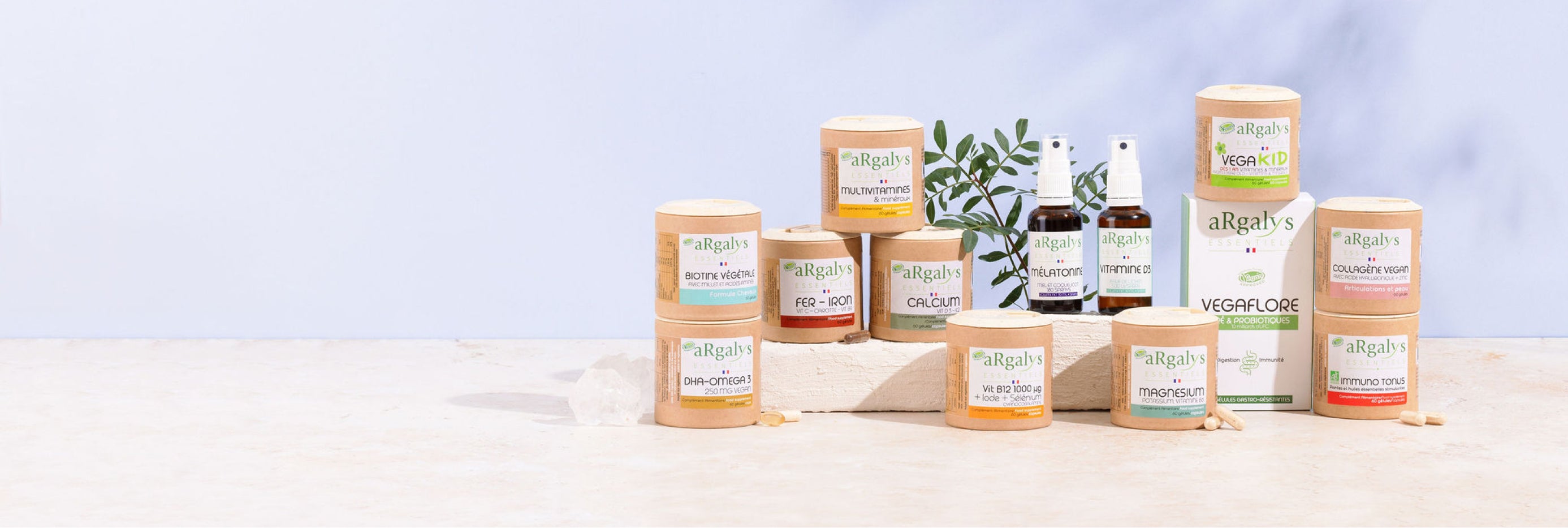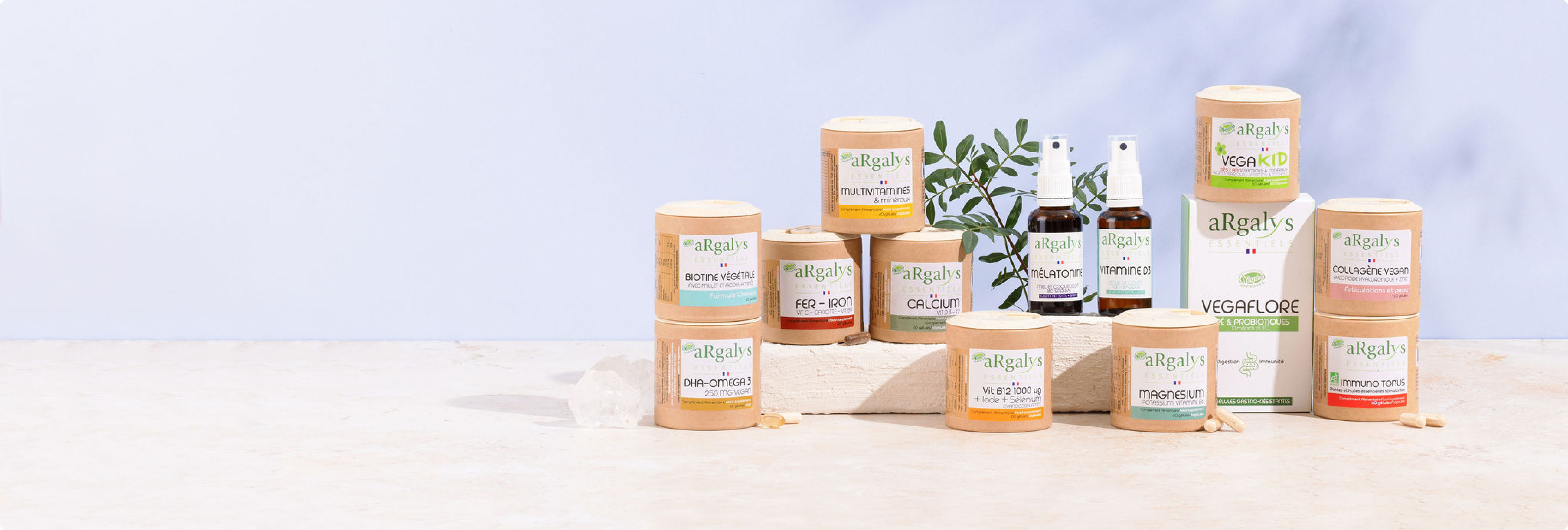Intense competition in the food supplement market explains the frequent use of somewhat truncated scientific results (we only keep part of the text which corresponds to what we want to demonstrate) when it is not the articles themselves which are oriented in order to 'objectively' justify the options chosen in the product that we want to promote.
All these little ethical deviations are called “pro domo demonstrations” ('for the house')!
Vitamin B12 comes in several molecular variants and does not escape the risks mentioned above.
In this article, we have decided to summarize the key information to remember about vitamin B12 and its different forms. We will also explain to you in complete transparency the reasons why we chose one B 12 molecule rather than another, weighing the 'pluses' and 'minus' of each option.
Reminder on vitamin B12 and its importance in the diet
Where does vitamin B12 come from?
Whether it comes from food supplements, enriched products or products of animal origin, vitamin B12 is produced by micro-organisms (bacteria).
Certain animal species such as herbivores have developed symbioses with these bacteria and can thus obtain their supplies directly. This is made possible thanks to their compartmentalized stomach which facilitates the multiplication of microorganisms before absorption in the intestines.
In other species such as rabbits, food must pass twice through the digestive tract (caecotrophy) so that the body can recover the nutrients and microorganisms (including vitamin B12) necessary for the animal.
In fish and seafood, vitamin B12 accumulates in tissues (including muscles).
For all other species, including humans, vitamin B12 intake is achieved by consuming the tissues of symbiotic animals.
Until recently (1960s) it became available in the form of a synthetic supplement, vitamin B12 deficiency was the number one problem with plant-based diets because plants have no, or very little, vitamin B12.
It should also be noted that cattle and poultry, raised in intensive conditions without much access to natural pastures, also have low levels of natural vitamin B12. Their diet is therefore often enriched with vitamin B12.
This is why it is always difficult to predict the actual intake of vitamin B12 through food.
Why should we take vitamin B12?
Vitamin B12, also called “cobalamin” acts as a co-enzyme or cofactor in our body .
This means that it promotes and stimulates certain vital reactions which have a much lower output in its absence.
It mainly contributes to the proper development and maintenance of nerve and blood cells and DNA, the genetic material of all cells.
Vitamin B12 also helps prevent a type of anemia called megaloblastic anemia that makes people tired and weak.
Its contribution to good growth begins from the development of the embryo and early childhood, which is why it must be taken very seriously from the first days of pregnancy.
Its medium-term deficiency induces disorders which may be irreversible (disturbed growth in young people, accelerated degeneration of nervous tissue in adults).
What are the different forms of vitamin B12?
Vitamin B12 or cobalamin is the most complex of the 8 B vitamins.
It has a particular chemical structure organized around a cobalt atom.
This cobalt ion can then bind to a ligand (or support) to form different chemical structures:
Vitamin B12 exists in 4 chemical forms:
- Adenosylcobalamin (AdoCbl): the ligand is linked to a 5'-deoxyadenosine group
- Cyanocobalamin (CNCbl): linked to a nitrile group (CN)
- Hydroxocobalamin (HOCbl): attached to a hydroxyl group (OH)
- Methylcobalamin (MeCbl): linked to a methyl group (CH3)
The natural form is hydroxocobalamin produced by bacteria.
It will then be converted into the form of methylcobalamin and adenosylcobalamin, the forms used as a cofactor in the body.
Cyanocobalamin and methylcobalamin are the most common forms in dietary supplements while hydroxocobalamin is generally used in injections.
What is the difference between Methylcobalamin and Cyanocobalamin?
There are no big differences between these two forms of vitamin B12.
Both forms are produced in the same way:
As explained previously, the cyanocobalamin used for supplements comes from a natural bacterial fermentation process. Microorganisms are multiplied in vats before the vitamin B12 is extracted and purified.
For the production of methylcobalamin used in food supplements, the process used is similar.
Would one molecule be more active than the other?
The debate is based on the fact that methylcobalamin and adenosylcobalamin are the two forms found in foods rich in vitamin B12, unlike cyanocobalamin which results from bacterial synthesis.
One molecular form would therefore be natural and the other synthetic: this is partially true to the extent that all the B12 used in supplements are obtained by synthesis.
In reality, the shape of the molecule has little or no impact on the conversion process of vitamin B12 in the body.
The initial molecules are always degraded before they can be assimilated: there is no form of B12 more “active” than the other.
The conversion of vitamin B12 in the body
The absorption of vitamin B12 occurs through two mechanisms.
There is so-called “active” absorption and “passive” absorption.
We will first detail the active absorption in the body which is a 4-step process which involves several proteins and specific receptors.
We have deliberately chosen to simplify the latter to facilitate understanding.
1 - First step: destruction of the cobalamin-ligand complex
After being ingested, the cobalamin-ligand complex ends up in the gastric system where an enzyme called pepsin will release the cobalamin molecule.
Regardless of the form of the complex initially ingested (hydroxyl, methyl, cyani groups, etc.), the cobalamin molecule of the complex will be released and its support destroyed.
Once released, the cobalamin molecule will bind to haptocorrin (or salivary R protein) which is a glycoprotein necessary for the passage of the vitamin to the small intestine.
2 - The passage into the duodenum (initial part of the small intestine)
Thanks to its binding to the R protein, the vitamin B12 molecule passes from the stomach to the duodenum where pancreatic enzymes will release the vitamin B12 molecule again.
Once released, the vitamin B12 molecule will bind to a new transporter (intrinsic factor) which will allow it to attach to a specific receptor present on the brush border of the enterocytes and to penetrate the intestinal barrier.
3 - Passage into the blood
After passing the enterocytes, the complex (vitamin B12 + intrinsic factor) is degraded again.
Only the cobalamin molecule will go into the blood where it will bind to transport proteins: transcobalamin or haptocorrin.
4 - The transformation of cobalamin into methylcobalamin or adenosylcobalamin
Vitamin B12 associated with transcobalamin represents the bioavailable form of vitamin B12 usable by the body.
This complex will then be internalized into the target cells where vitamin B12 will be transformed into methylcobalamin or adenosylcobalamin.
The expression “active form” is therefore irrelevant when talking about a food or commercial source of vitamin B12.
Cobalamin-ligand complexes are always degraded in the body upon their arrival in the gastric system. The different shapes will then convert to each other.
Therefore, methylcobalamin does not present any more structural properties in the body compared to cyanocobalamin .
The methylated compound will be destroyed upon arrival in the body before being “re-methylated” from free cobalamin.
Neither form is directly present as a “cofactor” in the capsule of your food supplement.
There is a second absorption mechanism which is called "passive" which intervenes when the first mechanism detailed above is saturated.
In fact, when vitamin B12 is taken in large quantities, all the intrinsic factors are already monopolized by one molecule of vitamin B12 (according to the report: one intrinsic factor = 1 molecule of vitamin B12), there will therefore be a large loss but certain molecules will still manage to pass into the blood without going through intrinsic factor. This is a diffusion phenomenon.
This mechanism justifies taking supplements rich in highly dosed vitamin B12 because the existence of the 2 mechanisms will allow a sufficient vitamin B12 intake.
To find out more about the latter, we invite you to consult the Vive La B12 website (see sources).
Which form of vitamin B12 is best absorbed, bioavailable?
Another part of the debate between the interest of one form rather than another is based on the bioavailability of the form of vitamin B12 ingested.
All forms of vitamin B12 help secure intake
In fact, most studies on this subject have demonstrated very similar absorption levels for the 4 forms of vitamin B12 studied.
Here are the main ones:
- As early as 1966, a first study ( Hydroxocobalamin. VI. Comparison of intestinal absorption in man of large doses of hydroxocobalamin and cyanocobalamin) concluded that the comparison of intestinal absorption in humans of large doses of hydroxocobalamin or cyanocobalamin did not revealed no difference (1)
- In 1970, the study Absorption of Cyanocobalamin, Coenzyme B12, Methylcobalamin, and Hydroxocobalamin at Different Dose Levels carried out by researchers in Scotland concluded that the proportions of vitamin B12 absorbed were similar between the different forms studied (2)
- Another, more recent study from 2015 ( Cobalamin coenzyme forms are not likely to be superior… ) concluded that differences in bioavailability between the two forms may be insignificant and that absorption could be influenced by factors such as age and genetics (3)
- More recently, in 2018, a study in rats on absorption differences between hydroxocobalamin and cyanocobalamin reaffirmed that both forms were absorbed in the same manner (4)
This information is also echoed by the National Institutes of Health regarding vitamin B12: “ Existing evidence suggests no differences between forms of vitamin B12 with respect to absorption or bioavailability ” (5).
Reuse of sources by laboratories
Conversely, a single document, subject to controversy because it is widely used by laboratories and detractors of cyanocobalamin, goes against previous studies .
This is the document “2017: Comparative Bioavailability and Utilization of Particular Forms of B12 Supplements With Potential to Mitigate B12-related Genetic Polymorphisms.”(6)
This document reaffirms several very important points:
- That all forms of vitamin B12 are reduced to cobalamin in the body
- Certain factors influence bioavailability (age, physiological factors)
- That all studies have shown similar absorptions between Methyl, Cyano and Hydroxocobalamin
This information does not contradict previous studies.
What will differ is the conclusion drawn in this same document.
Indeed, the authors state that the “Methyl” form should be preferred because it is more “bioavailable”.
This statement cannot be considered reliable for 2 reasons:
- The conclusion is not based on any study per se.
Although studies are cited to justify certain points in the document, none are used to justify the better bioavailability of Methylcobalamin.
This is simply a conclusion drawn by those responsible for the publication and is not based on any experience. - The supervisor of this publication is a consultant for a company that sells adenosylcobalamin hydroxocobalamin and methylcobalamin supplements. This is Mr. Brady "Mr. Brady, nd, dc, ccn, dacbn, is (...) chief medical officer for Designs for Health, Inc, in Suffield, Connecticut". The conclusions are therefore oriented and interested and often reused by this same distributor to justify the relevance of their formulations.
This is why this study is not reliable enough to be considered when studying the benefits of cyanocobalamin compared to Methylcobalamin.
To conclude, we note that there are still relatively few studies that make it possible to determine whether a form of vitamin B12 is preferred in terms of bioavailability or retention in healthy adults.
All forms of vitamin B12 seem interesting for preventing a deficiency or deficiency.
Our choice for vitamin B12: cyanocobalamin
To avoid any confusion on this subject and allow you to read the rest with peace of mind, it is important to remember that we do not produce vitamin B12.
We buy the ingredients, which means we had to choose completely independently which molecule to use, with a single objective: to offer the best quality compromise.
For our Argalys Essentiels food supplements rich in B12 , we have selected cyanocobalamin for 3 criteria on which this molecule is the most interesting:
1 - Cyanocobalamin is as well (sometimes better) absorbed as methylcobalamin , with the same limits when doses are large.
All serious measurements on this subject show that genetic variations from one individual to another have a much greater impact on absorption than the intrinsic differences between the shapes of molecules.
2 - Cyanocobalamin is a more stable molecule over time.
This is a fundamental criterion for your supplement to keep its properties and the dose of vitamin for which you purchased it until the end of the shelf life.
The combination of the “capsule” form and cyanocobalamin is much safer than the “tablet” and methylcobalamin combination. The methylcobalamin molecule is less stable and the manufacture of tablets requires exposure of the peripheral layer of the tablet to around 100°C during compression of the powder, a critical temperature for this molecule.
3 - The versatility of cyanocobalamin .
As explained previously, after transformation in the body, vitamin B12 is present as a cofactor in the form of methylcobalamin and adenosylcobalamin.
Cyanocobalamin can transform into either form unlike methylcobalamin which cannot transform into adenosylcobalamin.
To conclude
Vitamin B12 deficiency is pernicious because no short-term effects are observed, but the long-term effects are not always reversible (for young people during the entire growth period and on nervous tissues for adults).
Supplementation is now easy and safe, as no adverse effects of overdose are observed. People with no or little animal protein intake should take vitamin B12 supplementation at any age, while other populations at risk due to specific pathologies should ask their doctor for systematic monitoring of B12 levels in their body. the blood.
Whichever form of vitamin B12 you choose, be sure to pair it with a healthy, balanced diet to meet your nutritional needs and optimize your health.
Sources:
Where does vitamin B12 come from?
- Martens JH, Barg H, Warren MJ, Jahn D. Microbial production of vitamin B12. Appl Microbiol Biotechnol 2002;58(3):275-85
- Vitamin B12 and Growth: Vitamin B12 and the Growth of Children: A Review https://www.ncbi.nlm.nih.gov/pmc/articles/PMC1825521/?page=1
The mechanism of absorption of vitamin B12
- https://dumas.ccsd.cnrs.fr/dumas-01713379/document
- Long live B12: https://www.vivelab12.fr/absorption-passive/
- https://www.vivelab12.fr/absorption-active/
There is no difference in absorption between the different forms of B12: - (1) 1966: Weisber H and Glass GB Hydroxocobalamin. VI. Comparison of Intestinal Absorption in Man Of Large Doses of Hydroxocobalamin and Cyanocobalamin. Proc Soc Exp Biol Med May 1966; 122:25-28.
- (2) 1970: Absorption of Cyano cobalamin, Coenzyme B12, Methylcobalamin, and Hydroxocobalamin at Different Dose Levels https://tahomaclinic.com/Private/Articles3/VitaminB12/Adams%201971%20-%20Absorption%20of%20cyanocobalamin,%20coenzyme %20B12,%20methylcobalamin,%20and%20hydroxocobalamin.pdf
- (3) 2015: Cobalamin coenzyme forms are not likely to be superior to cyano- and hydroxyl-cobalamin in prevention or treatment of cobalamin deficiency https://www.ncbi.nlm.nih.gov/pmc/articles/PMC4692085/#SD1
- (4) Tissue distribution of oral vitamin B12 is influenced by B12 status and B12 form: an experimental study in rats: https://www.ncbi.nlm.nih.gov/pmc/articles/PMC5960002/
- (5) https://ods.od.nih.gov/factsheets/vitaminb12-Health%20Professional/#en5
- (6) 2017: Comparative Bioavailability and Utilization of Particular Forms of B12 Supplements With Potential to Mitigate B12-related Genetic Polymorphisms: https://www.ncbi.nlm.nih.gov/pmc/articles/PMC5312744/#b1-42- 49
Our Essentials dosed with Vitamin B12 + Iodine and Selenium:

Vitamin B12 + Iodine and Selenium
€19.90 for 30 weeks of treatment!
 04 74 03 98 80
04 74 03 98 80
